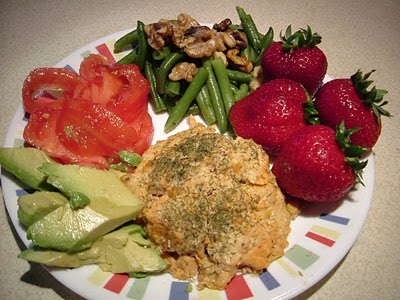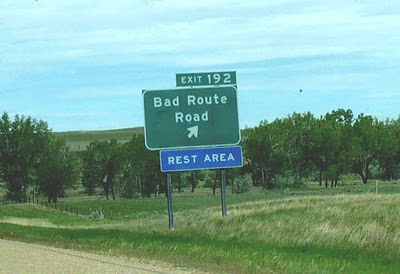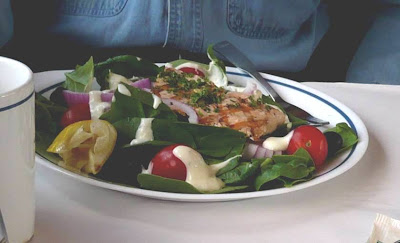Why did it go down? The better question is, why did it go up last month? Maybe because at that time I was recovering from two different virus infections and probably a related bacterial infection, and also had quite recently received my flu shot, the Magnum Jolt version for seniors.
Interesting: If it's true that IgG went up last month because of challenges to the immune system, then M-spike must have gone up for the same reason. Indeed, it's possible that the entire increase in IgG came from the M-spike component of IgG. Why would M-spike respond to challenges from intruding organisms? The answer is way above my pay grade.
Neutrophils: Again I had the CBC done at the local clinic on the afternoon before the visit to Mayo, because my neutrophil count seems to be much higher in the afternoon than in the morning. Also, just before the blood draw, I run up four flights of stairs and do some pushups, trying to squeeze out a little adrenaline, which is thought to tease the neutrophils out of their hiding places. Absolute neutrophil count was 2.5 K/uL, well into the normal range and WAY above the cutoff threshold of 1.0. Yay.
Discussed with Dr KDS:
- We agreed that I'm still stable on pomalidomide as a single agent. I won't change anything.
- A recent study has (finally!) shown that Zometa, one of the bone-building bisphosphonates, actually has a modest anti-myeloma benefit in addition to its bone-strengthening ability, improving both the average time to disease progression and the overall survival of study participants. Doctors are still getting their heads around this, but one possibility for some patients is Zometa once every month! Zometa can have serious side effects, though, including unusual and disabling fractures, and osteonecrosis of the jaw, so it is not an automatic prescription.
- Two more studies, evaluating the use of Revlimid as maintenance therapy after stem cell transplant, showed that patients in the Revlimid arm of the study developed more secondary cancers than those in the placebo arm. Numbers were small, however, with less than 3% in both arms together developing a secondary cancer. Both studies, by the way, also demonstrated that maintenance therapy improved time to disease progression, but neither showed a clear improvement in overall survival.
- Recent evidence suggests that my immune system may not be as strong as I have though it was. Three different virus infections were defeated only very slowly. Dr KDS is concerned that I could contract an opportunistic fungal infection called pneumocystis pneumonia, common with AIDS patients who may also have compromised immune systems. She prescribed a sulfa-based antibiotic called trimethoprim-sulphamethoxazole, brand name Bactrim, to be taken every day as a prophylactic treatment to prevent that pneumonia and any number of other bacterial and fungal infections.
There is a slim possibility of myelosuppression, however, which means low red and white blood counts; HELLO I already have that from the pomalidomide. It can also, rarely, cause liver or kidney failure, a potentially fatal complication. I hadn't heard of Bactrim prophylaxis before, but Dr KDS said that it has been used without incident by other patients in my situation. She knows that I will study this stuff and do my best to balance the risk of pneumonia against the risk of side effects, before making a decision. She also gave me an order for liver and kidney function tests which I can have done after trying the antibiotic for a week or two. Perhaps I'll talk to Dr B, my new PCP, about this.
| Test | Sep 23 | Oct 20 | Nov 18 | Dec 16 | Remarks | |||||
| M-spike g/dL | 1.2 | 1.1 | 1.2 | 1.0 | Best tumor measure? | |||||
| IgG mg/dL | 1070 | 1130 | 1300 | 1080 | Best tumor measure? | |||||
| L FLC mg/dL | 2.58 | 2.78 | 2.92 | 2.41 | L Free light chains | |||||
| Calcium mg/dL | 10.0 | 10.0 | 10.3 | 9.8 | Below 10.2 is OK | |||||
| Creat mg/dL | 0.9 | 1.0 | 0.9 | 1.0 | Kidney, OK | |||||
| HGB g/dL | 15.8 | 14.9 | 15.0 | 14.6 | Hemoglobin, OK | |||||
| RBC M/uL | 4.43 | 4.31 | 4.26 | 4.23 | Red cells, marginal | |||||
| WBC K/uL | 4.2 | 4.3 | 5.9 | 5.1 | White cells, OK | |||||
| ANC K/uL | 1.60 | 2.14 | 2.30 | 2.50 | Neutrophils, normal! |
Related Links:
| My Myeloma | A discussion of my myeloma, not very technical. | |
| My Treatment History | Not technical. | |
| My Test Charts | Graphic displays of several key test results over time. | |
| My Test Result Table | Somewhat technical. Best with a wide browser window. | |
| My Supplement Regimen | With links to where I buy them. |
























